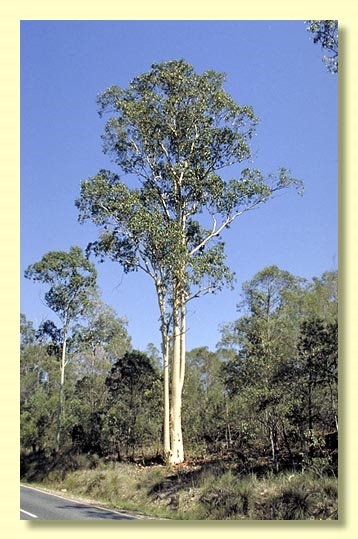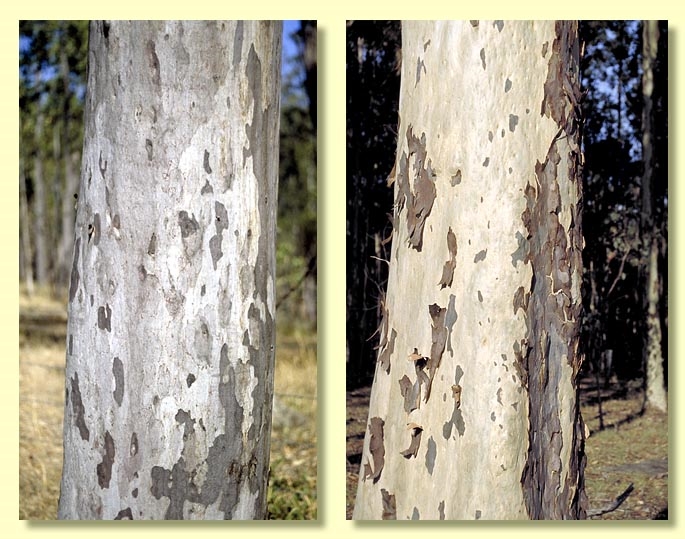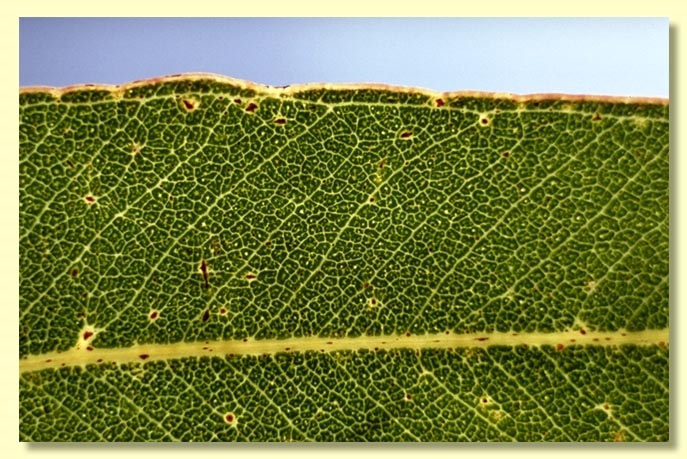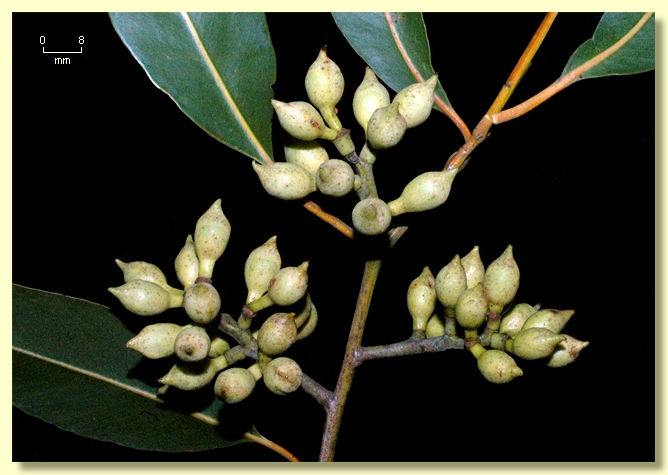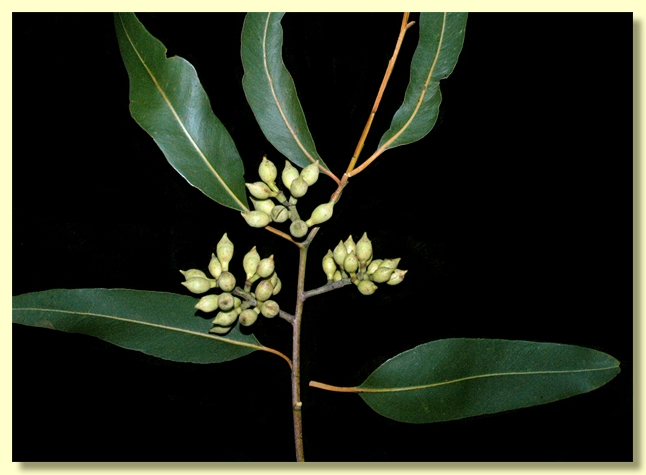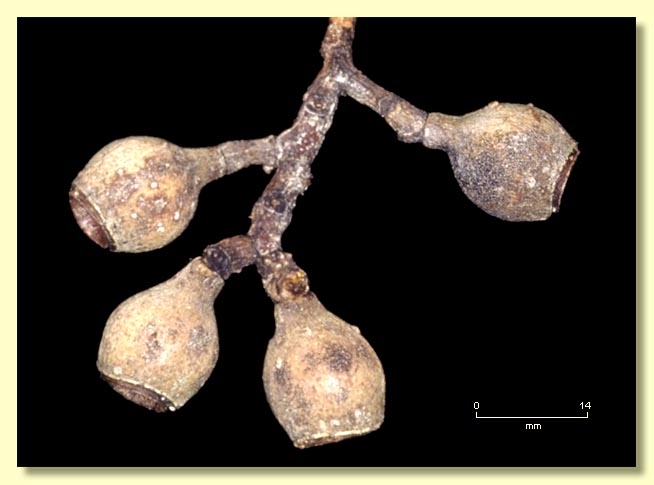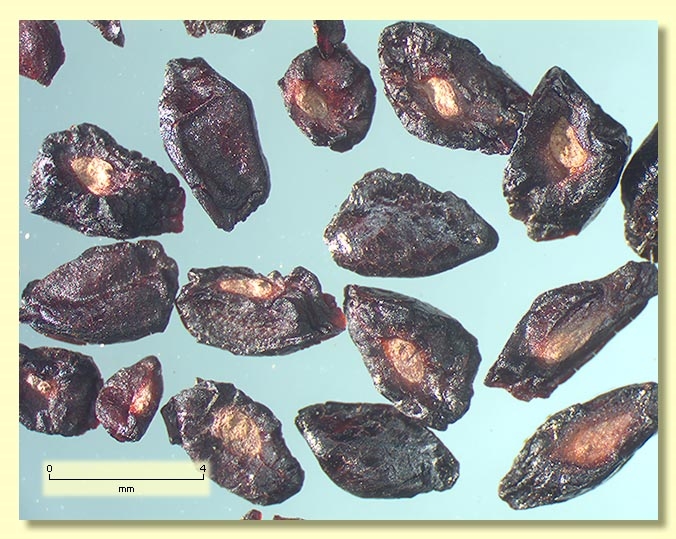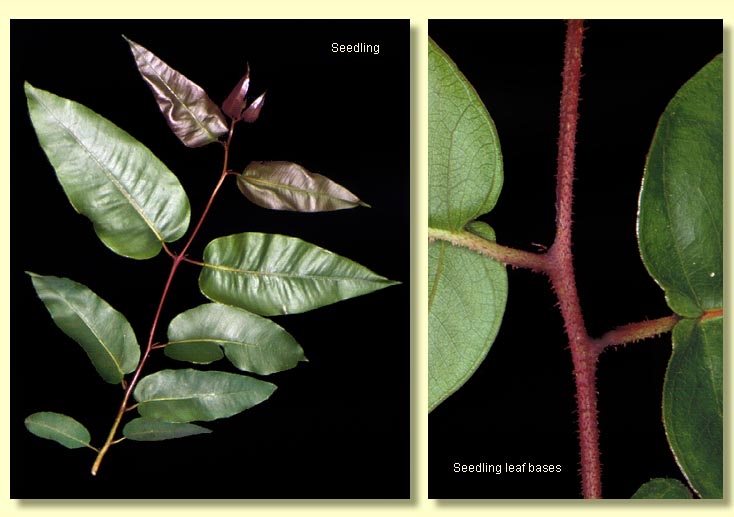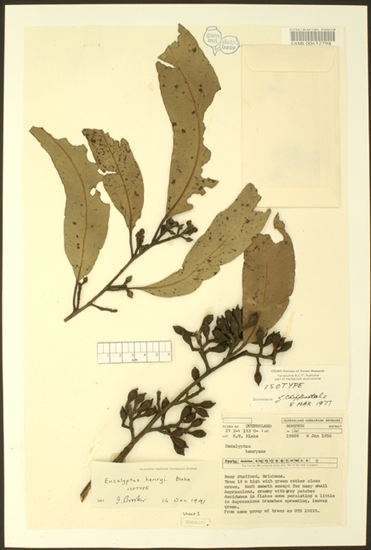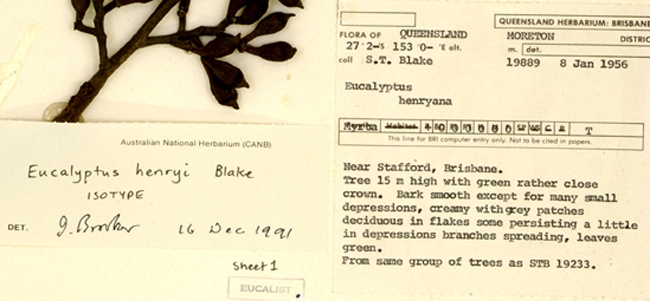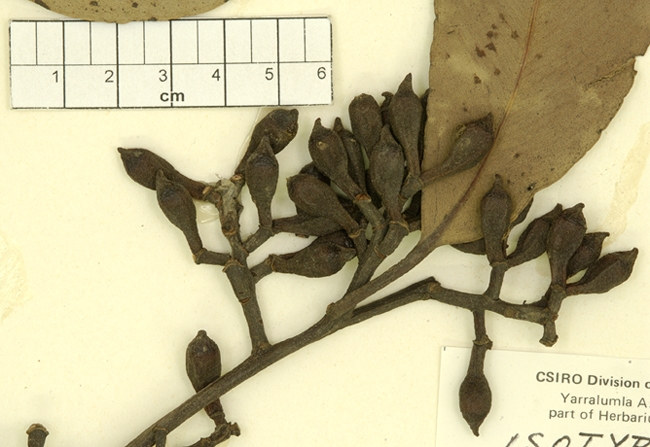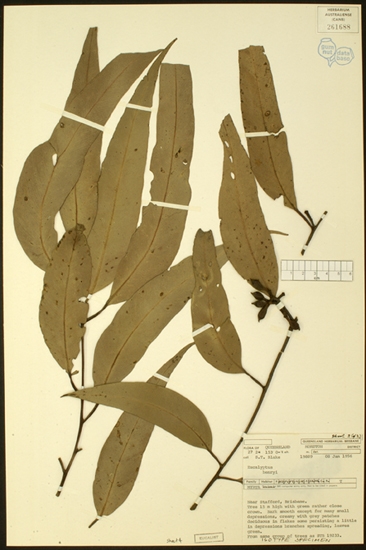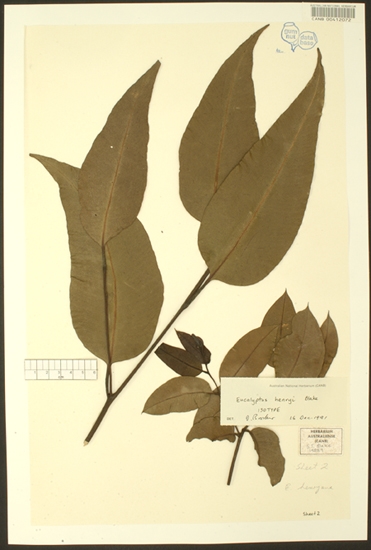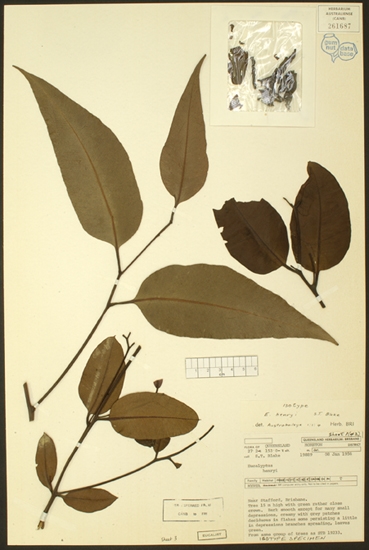Euclid - Online edition
Corymbia henryi
Corymbia | Politaria
Bark smooth, spotted grey, pink, cream, yellow, orange and salmon, sometimes becoming granular with age.
Branchlets smooth (glabrous); sometimes with oil ducts visible in the pith
Juvenile growth (coppice or field seedlings to 50 cm): stem rounded or square in cross-section; juvenile leaves opposite for a few pairs, petiolate, soon alternate, petiolate, broadly ovate to lanceolate, 8–25 cm long, 4–10 cm wide, base of lower leaves peltate becoming rounded to tapering higher up stem, green; stems, petioles and both surfaces of lamina scabrid for the first few nodes then smooth.
Adult leaves alternate, petiole 1.5–3 cm long; blade lanceolate, 11–28 cm long, 2.2–4.5 cm wide, flat or undulate (especially near the margin), base tapering to petiole, concolorous, glossy, green, side-veins greater than 45° to midrib, densely to very densely reticulate, intramarginal vein parallel to and remote from margin, oil glands mostly island.
Inflorescence axillary compound, peduncles 0.5–1 cm long, buds 3 per umbel, pedicels 0.2–0.7 cm. Mature buds ovoid to obovoid to pyriform, 1.2–1.3 cm long, 0.6–0.8 cm wide, often weakly 2-ridged at base of hypanthium, green, yellow or creamy, outer operculum shed at or just before flowering time, clearly separate from inner operculum, operculum conical and beaked, stamens inflexed, anthers cuboid to oblong, versatile, dorsifixed, dehiscing by longitudinal slits (non-confluent), style long, stigma blunt or tapered, locules 3 or 4, the placentae each with usually 5 vertical ovule rows. Flowers white or lemon.
Fruit pedicellate (pedicels 0.2–0.5 cm long), barrel-shaped to urceolate, 0.9–1.5(2) cm long, 0.9–1.6 cm wide, disc descending, valves 3 or 4, enclosed.
Seeds dark glossy red-brown, 3–4.5 mm long, flattened and with shallow dorsal keel (boat-shaped), sometimes pointed at one end, dorsal surface smooth and usually cracked, not winged, hilum ventral.
Cultivated seedlings (measured at ca node 10): cotyledons reniform to orbicular; stems rounded in cross-section except near apex where they are square, scabrid especially on lower internodes; leaves always petiolate, peltate from ca node 5 to 8 (rarely to node 11), opposite for 5 or 6 nodes then becoming alternate, ovate to broadly lanceolate, 12–20 cm long, 5.5–8 cm wide, base peltate and/or lobed only at lowest nodes becoming rounded to tapering up stem, apex pointed (drip-tip), slightly discolorous, glossy, green, newly formed leaves at growing tip very glossy and claret-coloured. Leaves scabrid on underside and petiole until ca node 8.
Flowering has been recorded in January and November.
A small to medium-sized tree of restricted distribution in coastal ranges of far northern New South Wales and south-eastern Queensland extending to the north-west of Brisbane and west towards Toowoomba. Corymbia henryi has smooth, mottled bark, large glossy green crown leaves, buds in clusters of three further aggregated in compound inflorescences in the axils of leaves, barrel-shaped to urceolate fruit 0.9–1.6 cm wide, and glossy red-brown flattened seed with a median dorsal keel (boat-shaped) and ventral hilum. MORE ABOUT CORYMBIA
C. henryi is one of three spotted gum species. It differs from northern forms of C. citriodora by the absence of lemon-scented oils in the leaves and more closely resembles the unscented southern forms of C. citriodora and C. maculata, but has larger leaves at all developmental stages and larger buds and fruit (although the range in dimension do show some overlap). In addition, few of the seedling, juvenile and intermediate leaves of C. henryi have peltate leaf-bases, unlike C. citriodora where peltate leaf-bases occur for many leaf-pairs throughout the juvenile phase, whereas C. maculata juveniles are peltate for some nodes then becoming rounded to tapering on taller coppice; setae (bristleglands) are not as prominent on seedlings and coppice of C. henryi and C. maculata compared with C. citriodora, occurring only on the lower few leaves.
MORE ABOUT SPOTTED GUMS
Neil Henry joined the Queensland Forestry Department as a cadet in 1945 and subsequently qualified in forestry, reaching the position of assistant Officer-in-Charge, Research Branch. He has published several papers on silviculture and was one of the first to embrace the new computer technology of the late 1960s, playing an important role in the publication of B.Hyland's very first card key to the rain forest trees of north Queensland. Henry's field observations led Stan Blake to this species, which was subsequently named in his honour.

